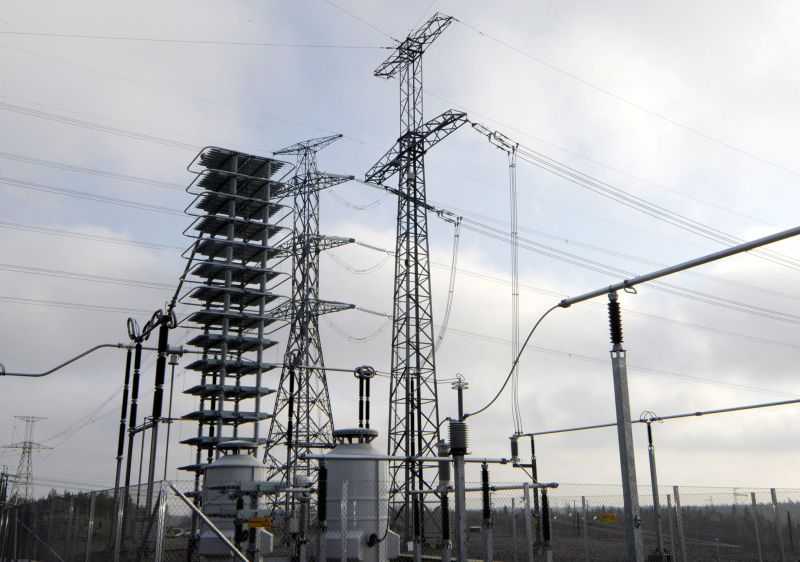NATO said on Friday it would boost its presence in the Baltic Sea after the suspected sabotage this week of an undersea power cable and four internet lines, while alliance member Estonia launched a naval operation to guard a parallel electricity link.
Finland on Thursday seized a ship carrying Russian oil on suspicion the vessel had caused an outage of the Estlink 2 undersea power cable linking it with Estonia and fibre optic lines, and on Friday said it had asked NATO for support.
Baltic Sea nations are on high alert for acts of sabotage after a string of outages of power cables, telecom links and gas pipelines since Russia invaded Ukraine in 2022, although subsea equipment is also subject to malfunction and accidents.
“We have agreed with Estonia, and we have also communicated to NATO Secretary General Mark Rutte, that our wish is to have a stronger NATO presence,” Finnish President Alexander Stubb told a news conference.
Rutte said he had discussed with Stubb the Finnish-led investigation, expressing his support.
“NATO will enhance its military presence in the Baltic Sea,” Rutte wrote on social media platform X.
Sweden’s coastguard said in a statement it had ramped up surveillance of ship traffic to protect critical undersea installations, deploying aircraft and vessels while coordinating with the Swedish navy and with other nations.
The Kremlin said on Friday Finland’s seizure of the ship carrying Russian oil was of little concern for Moscow. In the past, Russia has denied involvement in any of the Baltic infrastructure incidents.
Estonia said its navy had deployed to guard the still operational Estlink 1 subsea cable.
“If there is a threat to the critical undersea infrastructure in our region, there will also be a response,” Estonian Foreign Minister Margus Tsahkna said on X.
Tsahkna said on Thursday damage to subsea installations in the region had now become so frequent that it was difficult to believe they were all caused by accidents or poor seamanship.
The incidents highlight the need to update centuries-old maritime law to explicitly outlaw damage to undersea infrastructure, Estonia’s justice minister told Reuters on Friday.
The 658 megawatt (MW) Estlink 2 outage began at midday local time on Wednesday, leaving only the 358 MW Estlink 1 linking Finland and Estonia, the countries’ electricity grid operators said.
Finnish investigators believe the seized ship – a Cook Island-registered vessel named as the Eagle S – may have caused the damage by dragging its anchor along the seabed, one of several such incidents in recent years.
Shadow Fleet
The Finnish president said it had been necessary to stop the Eagle S to prevent further destruction.
“Had it kept going with its anchor on the seabed, more damage would have occurred,” Stubb said.
Finland’s customs service has said it believes the ship is part of a so-called shadow fleet of ageing tankers that seek to evade sanctions on the sale of Russian oil.
Finnish police said on Friday they were investigating the Eagle S on suspicion of “aggravated criminal mischief”, and that crew members had been interrogated. Finland’s border guard will help the investigation with seabed inspections, the police said.
United Arab Emirates-based Caravella LLCFZ, which according to MarineTraffic data owns the Eagle S, did not respond to repeated requests for comment.
Peninsular Maritime, which is based in India, and, according to MarineTraffic, acts as a technical manager for the ship, was not immediately available for comment.
Finnish Prime Minister Petteri Orpo said on Thursday it was too early to say whether Russia had played any role in the cable damage.
Finland’s Fingrid and Estonia’s Elering grid operators expect repairing the Estlink 2 to take months, with an estimated return to service on Aug. 1, 2025.
The outage could push up electricity prices during the winter months but will not prevent a planned decoupling in February of Estonia, Latvia and Lithuania from the Soviet-era joint power grid with Russia and Belarus, Elering has said.
Lithuania said on Friday its navy had increased surveillance and patrolling in the Baltic following the incident.
Swedish police are still conducting a criminal investigation into last month’s breach of two Baltic Sea telecom cables, and have named a Chinese ship travelling from Russia as a possible culprit.
Separately, Finnish and Estonian police are continuing a probe into last year’s damage to the Balticconnector gas pipeline and several telecom cables in which another Chinese vessel arriving from Russia was named.


